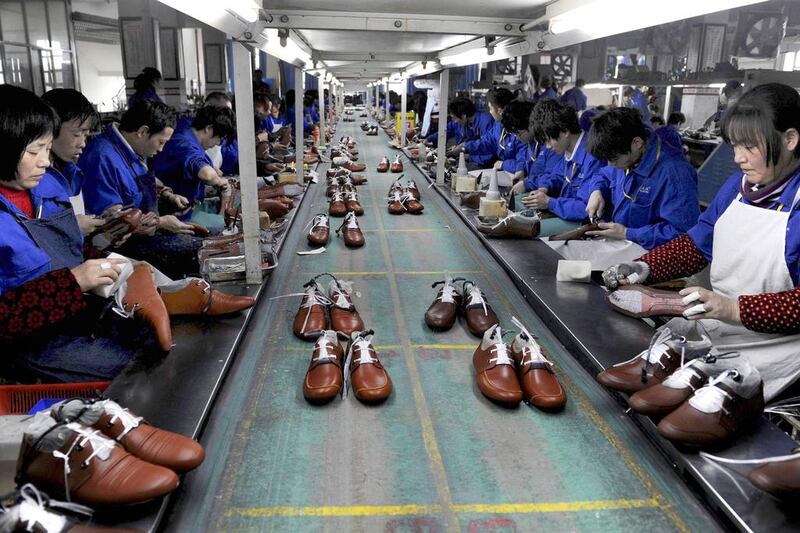If your company is not already trading with China in some way, chances are it soon will be. Research by Standard Chartered predicts that China’s dominance as the “megatrader” of this century will continue to grow, countering fears that China’s role in world trade has peaked.
Our recent report, “Global trade unbundled”, regards China as the focal point for rapidly growing trade, not only within developed markets, but increasingly between emerging markets as goods and services are not just made in these economies, but consumed there.
Global companies will need to position themselves for this continuing shift in world trade, adapting how and where they make and sell their goods. And all companies should take note that, as China’s trade grows in importance, so will the renminbi as a global invoicing currency.
China overtook the US as the world’s largest exporter in 2007 and now accounts for 11.5 per cent of all world trade. But since 2008 Chinese exports have slowed, causing some to fear a long-term decline for China’s trade.
We believe this fear is misplaced, for three key reasons:
First, China’s export growth was bound to slow from the breakneck pace of more than 25 per cent annually during 2000 to 2007. Since the global financial crisis, exports have been hit by weak demand in the West, especially Europe, but as growth picks up in developed markets, China stands to benefit.
Second, trade anywhere is increasingly likely to involve one or more Chinese counterparts. In recent years, China has cemented its position as a key player in global supply chains, with goods designed in one country, manufactured in several others (sometimes with back-and-forth trade in between) and then sent for final assembly somewhere else, more often than not China.
Think of Apple’s iPad, designed in the US and assembled in China from components made in countries across the globe.
We believe China — along with much of emerging Asia — will remain an attractive manufacturing base for global companies. Its low-cost advantage may be eroding, and some companies have transferred operations to lower-wage countries such as Vietnam, Cambodia or Bangladesh, or “onshored” production back home, but the pace of this transition is likely to be slow. Besides, China’s companies have the size and know-how to retain much of the business by investing in technology and raising skill levels.
As such, China will remain a great place to source suppliers for global corporates. China is already a major innovator, not least in processes; China’s patent applications at the major country patent offices have surged in recent years, and it is now the world leader, reflecting its key role in world manufacturing.
Third, China’s powerful role in world trade is not just about its exports. It now has the largest share of demand for most commodities, except oil where it is second only to the US. China’s focus on more balanced growth and structural reforms will over time drive up domestic consumption, making China an even more attractive market for global corporates and emerging market exporters.
Take the example of Apple again — with units once assembled in China and sold in the West, China is now the second-largest market for Apple products, and Apple expects it to overtake the US soon.
Economic reforms set in motion by China’s leadership are also likely to strengthen the private sector in China, opening up many more joint venture opportunities for global companies.
Overall, we expect China’s trade to double in size by 2020, with the next phase likely to come from massively growing trade with other emerging markets. Further out, to 2030, the World Trade Organisation expects China’s share of world trade to rise to 20 per cent or more, underscoring its central role in global trade.
As a “megatrader”, China will increasingly have a vested interest in promoting free trade, gradually opening up to more imports to satisfy consumer demand and keep trading partners happy. Moreover, it will remain heavily dependent on importing raw materials. Over time, it could — like Britain in the 19th century or the US after 1945 — become a champion for liberalising world trade.
What does this mean to corporates? It means that those who don’t already have a strategy for China, and more broadly for emerging markets, need to get one fast.
Already compelling, the argument for including the renminbi in your basket of global trading currencies will only grow stronger. Having climbed steadily up the rankings, the renminbi is currently the world’s seventh most used currency for payments, and predicted to be fourth by 2020, after the dollar, the euro and the pound.
By 2020, we expect 28 per cent of China’s trade to be denominated in renminbi, the equivalent of some US$3 trillion a year. The vast Chinese commodities imports, for example, will gradually convert to renminbi settlement.
Companies will need to work out how best to position themselves for the growing “south-south” trade — or trade between emerging markets — particularly trade involving China. This will affect not just where they make their goods, but how they make them, as they cater for a new and rapidly growing group of Chinese and other emerging market consumers.
The slowdown in China’s economic growth — and recent data sparking uncertainty about the country’s trade performance — should not be allowed to distract from what is a very clear long-term trend: China’s status as a “megatrader” will continue to grow and businesses everywhere should be figuring out how to make the most of it.
Mike Rees is the deputy group chief executive of Standard Chartered
Follow us on Twitter @Ind_Insights





